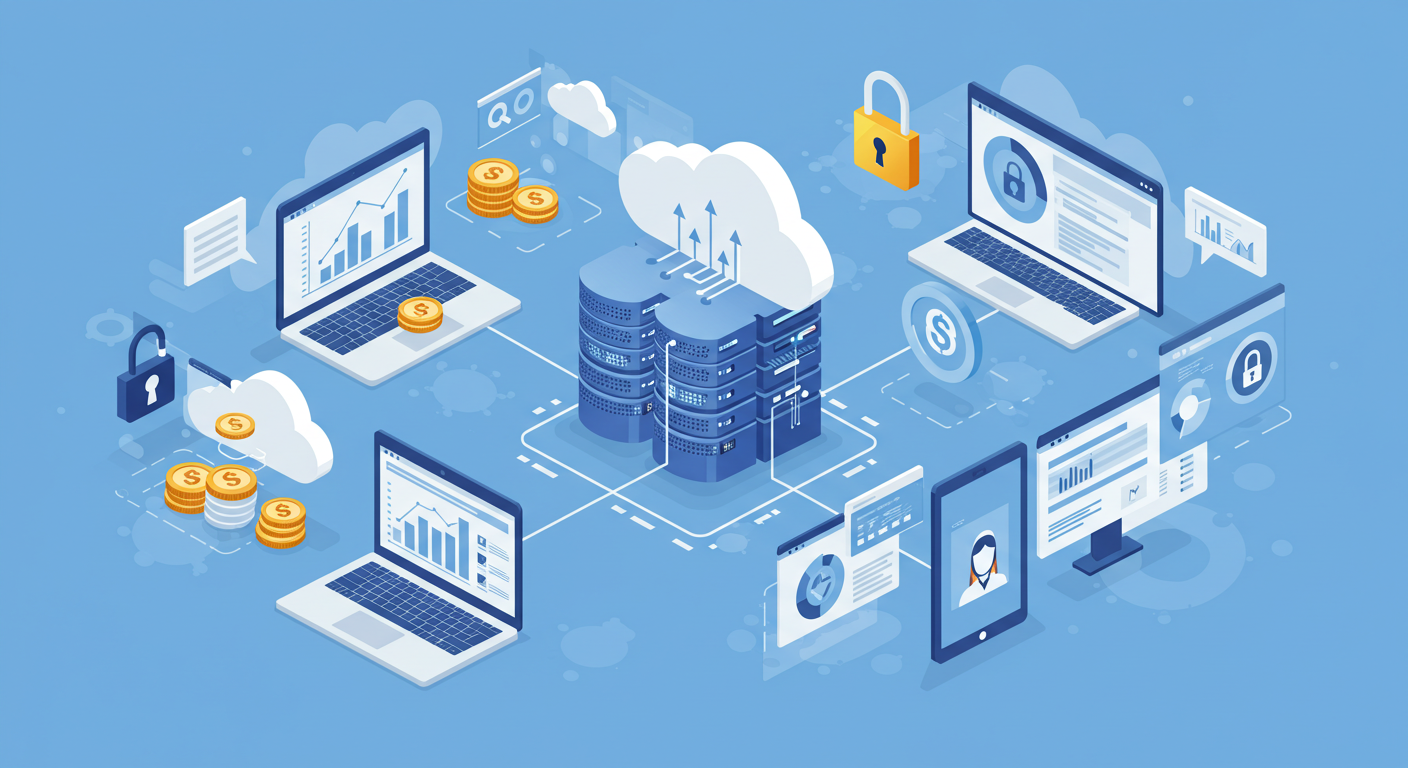Data as a Service (DaaS) is a simple way to get data from the cloud. It’s like renting a movie—you use it without owning the system. In 2025, DaaS helps businesses make smart choices, save money, and stay safe. Written by Louis J. Cervantes, a writer who knows data well, this article is clear and helpful for everyone, from small shops to big companies.
What Is DaaS?
DaaS stands for Data as a Service. It lets businesses use data without building big computer systems. Think of it like borrowing a book from a library. You get the data you need from a provider’s cloud platform. You don’t need to store it yourself.
DaaS helps many businesses, like stores, banks, and hospitals. For example, a store can use DaaS to see what customers buy most. This saves time and money because you don’t need fancy equipment or tech experts.
The DaaS market is growing fast. In 2025, it’s expected to be worth $20.74 billion. It grows 20% every year. North America uses DaaS the most, but Europe and Asia are catching up because of new data rules like GDPR.
How Does DaaS Work?
DaaS is easy to understand. A provider collects data, cleans it, and stores it in the cloud. You sign up and get the data through a website or app. The provider takes care of all the hard stuff, like keeping data safe and updated.
For example, a restaurant can use DaaS to check customer reviews or sales. It doesn’t need to build a big database. It just logs into the DaaS platform and gets the information right away. This makes work faster and easier.
DaaS handles all kinds of data, like customer names, sales numbers, or even social media trends. It works for small businesses and big ones. Unlike old systems, DaaS can grow with your needs, so you never run out of space.
DaaS Pricing in 2025
DaaS costs depend on how much data you use and what kind you need. Different providers have different plans. Here’s how pricing works in simple words:
Types of Pricing
- Pay by Data Size: You pay for how much data you use. For example, 1 terabyte might cost $500 a month. A big company might pay $2,000 for 10 terabytes. This is good if you know how much data you need.
- Pay by Data Type: Some data, like bank records or medical information, costs more because it’s special. Prices can be $100 to $5,000 a month.
- Monthly Plans: You pay one price, like $1,000 a month, for unlimited access to some data. This helps you plan your budget.
- Pay as You Go: You pay only for what you use, like $0.10 for each data request. This is great for small businesses with changing needs.
In 2025, banks and financial companies spend the most on DaaS, over $150 million, because they need data for things like checking fraud. Small businesses are using DaaS more too, as prices get cheaper.
Watch for Extra Costs
Some plans have extra fees, like for special tools or better security. For example, adding AI features might cost $200 more a month. Always ask providers about all costs to avoid surprises.
How to Save Money
To keep costs low, look at providers like AWS, Microsoft Azure, or IBM. Pick a plan that fits your needs. A small business might choose a pay-as-you-go plan to stay flexible. A big company might pick a monthly plan for steady costs. Always check the details to avoid hidden fees.
Security Risks of DaaS in 2025
DaaS is useful but has risks. Hackers and mistakes can cause problems. Cybercrime will cost businesses $10.5 trillion in 2025. Knowing the risks helps you stay safe.
Main Security Risks
- Data Theft: Hackers try to steal data, like customer names or bank details. In 2024, 7 billion records were stolen, and 2025 could be similar.
- Data Leaks: If cloud settings are wrong, data can accidentally go public. For example, a company might leave a server open by mistake.
- Worker Mistakes: Employees or partners might misuse data. Only 36% of companies know who looks at their data, so this is a big worry.
- Breaking Rules: Laws like GDPR or HIPAA require safe data handling. Breaking them can mean big fines, up to 4% of your yearly income.
- Weak Providers: If a DaaS provider has bad security, your data is at risk. One weak provider can harm all their customers.
How to Stay Safe
Here are simple ways to protect your data:
- Choose a Safe Provider: Pick companies like IBM or AWS with strong security. Look for ISO 27001 certification.
- Use Encryption: Encryption makes data hard for hackers to read.
- Control Access: Use strong passwords and extra security steps, like codes sent to your phone.
- Check Often: Look for problems in your systems regularly to catch issues early.
- Train Your Team: Teach workers how to avoid scams and handle data safely. Mistakes cause 68% of data problems.
In 2025, AI tools help find threats faster. But hackers use AI too, so you must stay careful. Pick a provider with strong security to keep your data safe.
Business Value of DaaS in 2025
DaaS helps businesses in many ways. It saves money, improves choices, and keeps you ahead of others. Here’s how it works:
Smarter Choices
DaaS gives you data right away, like sales or customer habits. A store can see which items sell best and stock more. This helps make better decisions and earn more money. For example, a bank can use DaaS to spot fraud fast, saving millions.
Saving Money
Building your own data system costs a lot. You need computers, workers, and updates. DaaS cuts these costs. A small business might save $50,000 a year using DaaS. You only pay for what you use, so there’s no waste.
Growing Easily
DaaS grows with your business. A small company can start with a cheap plan and add more data later. For example, a delivery company can use more data during busy times, like holidays, and less during slow times.
Knowing Customers Better
DaaS helps you understand customers. A hospital can use patient data to give better care. A shop can learn what customers like and offer better deals. This builds trust, as 84% of people like companies with good security.
Following Rules
DaaS providers help you follow laws like GDPR or CCPA. They have tools to keep data safe and legal. This saves you from fines and trouble. For example, a bank can use DaaS to meet strict privacy rules.
Staying Ahead
Companies with DaaS act faster than others. A bank with real-time data can stop fraud before it spreads. This protects customers and your reputation. In 2025, banks, tech companies, and stores use DaaS the most, with banks spending $150 million.
DaaS Trends in 2025
DaaS is changing fast. Here are important trends for 2025:
- AI and Machine Learning: DaaS uses AI to study data quickly. It can predict what customers want, like which products will sell.
- Hybrid Clouds: Companies use both public and private clouds for more control and safety. This is big in Europe because of GDPR.
- Edge Computing: Data is studied where it’s used, making things faster. For example, a factory can check machine data right away.
- Blockchain: This keeps data safe and trustworthy. It’s used in banks for secure transactions.
- Serverless Systems: You focus on data, not computers. This saves time and money.
These trends make DaaS stronger and more popular. Businesses that use them stay ahead.
Choosing a DaaS Provider
Not all DaaS providers are the same. Here’s what to check when picking one:
- Safety: Look for encryption, strong passwords, and certifications like ISO 27001.
- Growth: Make sure the provider can grow with your business.
- Cost: Compare plans to find one that fits your budget.
- Help: Choose a provider with 24/7 support to fix problems fast.
- Rules: Ensure they follow laws like GDPR or HIPAA.
Top providers in 2025 include AWS, Microsoft Azure, and IBM. They have strong safety and flexible plans. Smaller providers like V2 Cloud are good for startups needing simple setups.
Why DaaS Matters for You
DaaS is a big deal in 2025. It makes data easy to use, saves money, and keeps your business safe. Whether you’re a small shop or a big bank, DaaS helps you work better. Choose a good provider and plan to avoid risks and get the most value.
To start, make a data plan. Decide what data you need and how much you can spend. Try DaaS with a small project to test it. Train your team to use it safely. With DaaS, your business can grow, stay secure, and beat others.
Disclaimer: This article is only for learning and general information. It is not advice for business, law, money, or security. Always check with a trusted expert before making any big decision. We try to share correct facts, but we cannot promise everything is 100% right or up to date. We are not responsible if you use this information and face any loss or problem. This is not a paid, promotional, or affiliate article. It is only written to explain Data as a Service (DaaS) in simple words.
Explore More
Doge Software Licenses Audit HUD: Exclusive 2025 Report, Key Risks & Savings Uncovered

Hi! I’m Louis J Cervantes, a friendly content writer who loves creating stories and articles. I write clear, fun, and engaging content that everyone can enjoy. With my passion for words, I make ideas come to life for blogs, websites, and more. When I’m not writing, I enjoy reading books, sipping coffee, and exploring new places. Let’s connect through stories!
